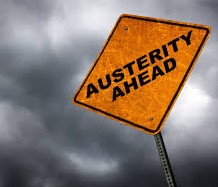 Fiscal austerity, fiscal consolidation and spending cutbacks currently dominate the politics of many of the world’s democracies. Old political arguments are being tested with new battles emerging over whose expectations are to be disappointed and who should be blamed for fiscal squeeze. Can the fiscal travails of the early United States in the 1840s, when half of the states then in the Union had to default over their debts and new unpopular taxes had to be imposed in the middle of an international trade slump, help us draw lessons for the Eurozone debt crisis of the early 2010s? Could cases often presented as ‘poster children’ of successful fiscal consolidation (and at those often portrayed as failures or ‘basket cases’) inform us about the politics of those fiscal squeezes? Can governments that copy ‘good’ examples of fiscal squeeze escape punishment at the polls? A recent conference on the politics of fiscal squeeze explored some these issues and looked at how it has played out in different times and places. It considered in depth nine cases of fiscal squeeze (defined as the political effort that goes into reining in expenditure or raising taxes) and explored what conclusions we can draw for current debates about fiscal squeeze from earlier cases in other democracies.
Fiscal austerity, fiscal consolidation and spending cutbacks currently dominate the politics of many of the world’s democracies. Old political arguments are being tested with new battles emerging over whose expectations are to be disappointed and who should be blamed for fiscal squeeze. Can the fiscal travails of the early United States in the 1840s, when half of the states then in the Union had to default over their debts and new unpopular taxes had to be imposed in the middle of an international trade slump, help us draw lessons for the Eurozone debt crisis of the early 2010s? Could cases often presented as ‘poster children’ of successful fiscal consolidation (and at those often portrayed as failures or ‘basket cases’) inform us about the politics of those fiscal squeezes? Can governments that copy ‘good’ examples of fiscal squeeze escape punishment at the polls? A recent conference on the politics of fiscal squeeze explored some these issues and looked at how it has played out in different times and places. It considered in depth nine cases of fiscal squeeze (defined as the political effort that goes into reining in expenditure or raising taxes) and explored what conclusions we can draw for current debates about fiscal squeeze from earlier cases in other democracies.
Lord Stern (LSE) chaired the opening session. Based on his experience at the IMF, he commented on the remarkable depth of some of the fiscal squeeze cases discussed in the conference, given the political difficulty of cutting expenditure by more than 1 per cent of GDP per year. The conference began by examining two cases from the early days of modern democracies: the United States after the financial panic of 1837 and the UK’s famous Geddes Axe in the 1920s. It then moved on to looking at fiscal squeezes in more recent times: New Zealand, Sweden, the Netherlands, Ireland, Canada, Argentina and Germany. The nine international cases of fiscal squeeze were then systematically compared using published data and techniques of qualitative comparative analyses, in a session chaired by Lord Gus O’Donnell. It was clear from that analysis that there is not a single set of economic and financial conditions that precede fiscal squeeze in all cases and that fiscal squeeze is by no means always a certain route to electoral defeat for incumbent parties in government.
The presenters included: Sebastian Dellepiane, Bob Gregory, Niamh Hardiman, David Heald, Rozana Himaz, Christopher Hood, Walter Kickert, Anders Lindblom, Martin Lodge, Alasdair Roberts and Donald Savoie. The papers from the conference will be published as a book by the British Academy, later this year.
The conference also brought in the practitioner’s perspective on ‘Ending the Party’ in an evening session with Rachel Lomax formerly of HM Treasury, the World Bank and Bank of England in conversation with Professor Tony Travers, Visiting Professor at LSE. It also included an evening session going beyond economics and political science to look at how times of fiscal austerity were reflected in film, cartoon and gallery art, with experts exploring these issues from the perspective of social history.








No Comment